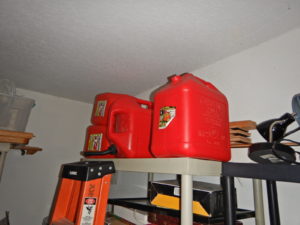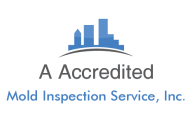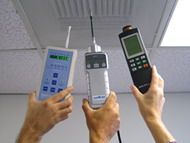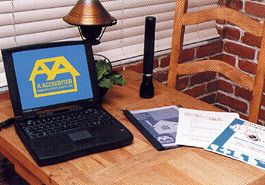Indoor Air Quality Inspection Information
Who Are We
A Accredited is a fully certified mold and indoor air quality inspection firm. We performing IAQ consulting services for commercial and residential clients. Areas we serve include Miami, Ft Lauderdale, West Palm Beach, and all of South Florida. We test for volatile organic compounds, formaldehyde, sewer gas, mold, and unusual odors. For larger inspections we cover all of Florida and the Caribbean. We have provided professional quality indoor air quality inspections and testing since 2003. Before you schedule, you must let us know your specific concerns so we can prepare accordingly.
What We Do
On indoor air quality inspections our specialist will utilize some of the tools we discuss below. However, our experience and knowledge are some of the best tools we provide. Some things we are capable of testing for include: Temperature & humidity, elevated mold spore levels, carbon dioxide, carbon monoxide, hydrogen sulfide, nitrogen oxides, ozone, formaldehyde, and hundreds of volatile organic compounds. You must let us know ahead of time if you desire mold or IAQ testing, or both, so we can bring the proper equipment and budget the proper amount of time.
REASONS TO TRUST US
WEST PALM BEACH INDOOR AIR QUALITY INSPECTION
EXPERIENCE
You can trust your valuable property and health to experienced hands. We have been providing reliable services in the form of indoor air quality testing and inspections in your area since 2003. To see examples of some of our past commercial building IAQ inspections click here. We have the experience you have been looking for.
 INDOOR AIR QUALITY INSPECTION
INDOOR AIR QUALITY INSPECTION
CERTIFICATIONS
When using A Accredited Inspection Service you will be hiring a mold and air quality inspection service that is properly certified.
The CIEC Certification is without any doubt one of the nations highest mold and indoor air quality related certifications. Most certifications require nothing more than two days of classes in a hotel room. You can verify our certification by clicking here.
Our CIEC certification requires 8 years of experience, or 8 years of education, or a combination of relevant experience and secondary science education. The experience and education requirements must add up to a total of eight years. There is quite obviously a big difference between a certification that was two days in the making and one that was 8 years in the making.
In addition to strict prerequisites, a rigorous exam taken at a proctored testing center is required. Your local mold inspector Daryl Watters received a 85 on his CIE exam in 2004 and a 96.6 on his even harder CIEC exam in 2015.
 OUR
OUR
REVIEWS
You don’t have to trust us, we have plenty of 5-star reviews, always check reviews and take the time to read them. Just click here to see what our clients have to say about our mold services.
OUR
LICENSE
Of course we are licensed. Here is a link so you can verify our license status. License number MRSA 328. We obtained our mold assessment license the very first year mold licenses were offered in the state of Florida! Unfortunately, the state of Florida offers no license for indoor air quality testing.
OUR INDOOR AIR QUALITY INSPECTION
REPORT
Our West Palm Beach air quality consultant will provide a comprehensive inspection report that gives various causes of air quality problems. We also provide environmental readings and recommendations about the best possible remedy. The written report will contain photos and elaborated details. The report will cover various issues related to air quality problems at your home or commercial building.
We not only use mold inspection reporter (MIR) software forms for creating chemical related indoor air quality reports, allergen reports, humidity problem reports, and mold reports. We also created (MIR). This reporting system was created by our inspector Daryl Watters. It is used by many other IAQ consultants and mold inspectors nationwide.
Thus, you will receive a quality air quality report.
Tools We Use on IAQ Inspections.
Summa Canisters
Thermal Desorption Tubes
Gas Detection Tubes
Photo Ionization Detectors
Mold Spore Traps
Infrared Cameras
Moisture Meters
CO2 Meters
CO Meters
Our Goal
The goal of our Indoor Air Quality Inspections is to provide you with a clear and understandable report. We report on the types and levels of various indoor air contaminants and their likely sources. We also provide suggestions on how to rectify any mold or general indoor air quality problem we identify.
The below is some information from A Accredited Mold Inspection
Service on some common indoor air quality issues.
Common Indoor Air Quality Inspection Problems
Formaldehyde
Formaldehyde is a common indoor air quality problem. In the home it is primarily released by glues used in the manufacture of particle board, wood veneers, wood furniture, plywood, and other wood products. Formaldehyde is also released by spray-on insulating foams and many other common construction related products.
These substances slowly give off formaldehyde over time. Formaldehyde is one of the more common indoor air pollutants. At concentrations above 0.1 ppm formaldehyde can irritate the eyes and mucous membranes, resulting in watery eyes. If inhaled, formaldehyde at this concentration may cause headaches, a burning sensation in the throat, and difficulty breathing, and asthma.
What is Relative Humidity?
Relative humidity is simply a measurement of the amount of moisture in air compared to the maximum amount of moisture that same air could hold at a given temperature and pressure.
Example: If your humidity is at 50%RH then your air is 50% full of water in regards to the amount of moisture it can hold. 50% is a normal indoor humidity level.
Why Do They Call It Relative?
You may think humidity is only determined by the amount of moisture in your air, but this is not true. Humidity levels are determined by three factors. It is determined by the amount of moisture in your air, and also on the temperature and air pressure in your air. Thus, humidity is called “relative” humidity because humidity levels are relative to temperature, air pressure, and the amount of moisture in your air.
Example:
Here is an example. If your air has a slightly high amount of moisture in it, let’s say 75 grains of moisture, then you will be fine at a room temperature of 76F. At this amount of moisture (75 grains,) and at this temperature (76F) then your humidity will be (55%.) We have no problems with that. All is fine, these are normal readings.
However, if that exact same air containing the same amount of moisture or 75 grains of moisture touches an AC register at 59F what happens? The metal register will be cooled to 59F. That air touching that cold metal register will reach 100%RH. In other words, at (59F) air that contains (75) grains of moisture will reach (100% RH) and condensation will form on the register, next mold will grow on the register.
Thus, in the same property, you can have normal humidity levels of 55% in the room air. That exact same air will be at 100%RH and form condensation droplets and mold at a cold 59F AC register.
Fortunately, if your room air is at 55%RH this may not be high enough to cause a condensation problem. The reason is because the air in your home may be at 55%RH, but the cold air blowing out your registers will be dryer than 55%RH because it was just dried by your AC before blowing out your ducts. Thus, in the real world, humidity would likely be higher than 55% for it to cause condensation and mold on your registers.
What is Considered High Indoor Relative Humidity?
Levels above 60% RH may be considered high and may promote mold growth. Levels above 65% may be uncomfortable according to ASHRA standards and is considered high. At 100% humidity the air is extremely humid and cannot hold the moisture anymore. At 100% RH the humidity or air-born moisture starts to condensate or change from humidity to water droplets. If humidity is borderline high or high at around 60% RH to 65% RH, we often find condensation and mold on register. If levels are high enough mold will grow on everything.
Low Humidity Levels
Humidity below 30% can cause drying of the lips and the mucous membranes in the throat, nose, or sinuses. Dry air turn causes irritation and some believe it may even lead to a higher likelihood of contracting colds. Why would low humidity cause more colds you may ask? Because low humidity can cause damage or cracks to the mucous membranes that let in viruses. It can also cause static electricity build up in offices. Static electricity can in turn put computers at risk of a loss of data. Keep your humidity between 30% and 60%RH. If you want to read more about humidity and humidity control check out this page.

Here we see gas filled cans stored in a garage. When you have negative pressure in the home can cause gas and other chemicals stored in the garage to be pulled into the home.
Negative Pressure
Building pressure problems such as negative pressure are often overlooked by indoor air quality inspection services. Sometimes negative pressure in homes and other buildings causes humid outdoor air to be pulled into buildings.
Three Problems Caused by Negative Pressure:
1) When hot humid air is pulled into air conditioned walls it can form condensation and mold deep in your walls.
2) Radon can be pulled into buildings in environments where radon is problematic such as in New England.
3) Negative pressure can pull dangerous levels of carbon monoxide out of gas burning devices. Smelly crawl space or attic air can also be pulled into such buildings.
IF you have negative pressure in your home, and you store gas filled cans in your garage, then you may be pulling gas fumes into your home.
What Causes Negative Pressure
One of the more common causes of negative pressure is leaky AC ducts in crawl spaces and attics. When air from an AC duct leaks air into an attic or crawl space, this results in less air in your home, and thus, less air pressure in your home.
Another cause of negative pressure can be the use of ventilation fans and hoods vented to the exterior. If not corrected, negative pressure can cause serious problems in areas with radon or humidity. Thus, positive pressure is desirable in hot humid environments and in areas with radon problems. In temperate climates when it is cool or cold outside positive indoor pressure is to be avoided because it can push the buildings humid indoor air into walls where it cools and forms condensation.
Inspectors often use digital manometers of smoke from smoke pens to detect negative pressure. For more info on negative pressure visit this other page on this same website.
Water Damaged Building Materials
When leakage occurs indoors it often results in mold growth in the vicinity of the leak. One thing about leaks that makes mold so problematic is that a small leak can travel hidden for long distances. Water can travel hidden for a few inches, or from one end of a property to the other without being detected. Wherever the water goes, the mold will follow. Mold in turn can cause allergenic particles and irritants such as mold spores, mycelium fiber fragments, and MVOC’s to be released into your air.
Mold is a common cause of indoor air quality related health complaints. In fact, Mold inspections are the most common type of indoor air quality inspection we provide. Moisture problems that cause mold must always be investigated and dealt with as soon as possible.
Mold inspectors, and other indoor air quality investigators may use a moisture meter to detect moisture hidden inside water damaged building materials. These tools and all tools are limited in their abilities to find mold and moisture. The most important part of a mold inspection is not air testing, but it is the moisture testing and the visual inspection.
Mold is the most common indoor air quality problem we encounter. In addition to mold, water damage can cause a proliferation of roaches and dust mites. We will not go into more discussion on mold because so many other pages on this website discuss mold.
Physical and Psychological Stressors
Stressors play an important role in building occupants’ resistance to and perception of indoor air quality problems. According to the Technical Guide to the Investigation of Indoor Air Quality in Office Buildings: Stressors are environmental parameters, such as lighting, noise, vibration, ergonomics, and thermal comfort.
According to the above referenced source thermal comfort is “A state of mind in which a person feels satisfaction with the thermal environment.” Ventilation rate is also an important factor to consider. Ventilation rate is the amount of outside air that is supplied to the interior space.
Dust and Other Particulates
Air contaminated with excess particles can also cause negative reactions. Some particles cause direct irritation when levels are elevated. In the case of household dust people do not typically have a direct reaction to common dust. Common dust is as much as 80% dead human skin cells, so why would a human have a bad reaction to human skin particles? When people have allergic reactions to common household dust, it is not the dust causing the problem. Reactions to dust typically involve a reaction to allergenic proteins found in dust mite feces.
Carbon Dioxide
Carbon dioxide testing meters are one of the most important tools in the indoor air quality consultant’s arsenal. Testing co2 levels can let an inspector know if adequate amounts of fresh outdoor air is entering a building. High carbon dioxide levels are not typically a direct threat to human health. High carbon dioxide levels usually indicate a lack of adequate outdoor air being introduced into the building. Dust, chemicals, and body odors build up along with carbon dioxide. In poorly ventilated buildings it is these other indoor pollutants that result in indoor air quality complaints and health complaints. According to
According to American Society of Heating Refrigerating and Air Conditioning Engineers ASHRAE 62-89 Outdoor air supply into the building should be at least 20 cubic foot per min per person in offices. This will help maintain carbon dioxide levels below 1000 ppm. Newer requirements recommend levels no more than 700 ppm higher than outdoor carbon dioxide levels. Outdoor air that is being introduced into a building must meet the US EPA National Primary Ambient Air Quality Standards. In short, it must be clean or it must be properly filtered.
Carbon Monoxide
WARNING: Carbon monoxide can rapidly rob your blood’s ability to properly absorb oxygen. Thus, high CO levels can be deadly. If carbon monoxide levels at your property are dangerously high then emergency measures such as immediate evacuation may be deemed necessary. Even if slightly elevated further investigation by a qualified, licensed, specialist is recommended, and appropriate repairs or other measures may be needed. The leading cause of deaths from carbon monoxide poisoning in homes is automobile exhaust escaping from garages. Improper combustion of fuel in gas appliances, improper ventilation of combustion gases to the exterior, and cracked heat exchangers are also important sources of carbon monoxide exposure.
At low concentrations the health effects are fatigue in healthy people and chest pain in persons with heart disease. At higher concentrations it causes impaired vision and coordination problems. Other symptoms include, headaches, dizziness, confusion, and nausea. It can cause flu like symptoms that clear up after leaving home. Carbon monoxide is fatal at very high concentrations.
Average levels in homes without gas stoves 0.5 to 5 ppm.
Levels near properly adjusted gas stoves are 5 to 15 ppm.
Near poorly adjusted stoves 30 ppm or higher.
The above information is from epa.gov/iaq/co.html
VOC’s
Volatile organic compound also known as VOC’s are common indoor pollutants composed of organic chemicals that evaporate into the air easily. VOC’s often cause chemical odors, respiratory irritation, headache, and other indoor air quality related complaints. At certain high levels they can be dangerous. Testing for these compounds is one of the key tests run during indoor air quality inspections. These chemicals are released by: Paints, paint thinners, varnish, new carpets, new cabinets and furniture that contains particle board. Other sources include household cleaners and air fresheners, and fuel gas. Some devices that release VOCs include improperly vented combustion devices, photocopier machines, blueprint machines, and many other devices.
Case Study 1:
During one indoor air quality inspection we conducted in the Port St Lucie area we found serious VOC problems in a commercial printing facility. The air problem was new, but the building design and the printing process had not changed. Why did the printing fumes become a problem all of a sudden you may ask? Facility maintenance changed two doors and forgot to put gaskets on the bottom of the doors. Negative pressure then pulled the VOC fumes out of the printing area, under the two doors and into areas where workers became sick.
A simple issue with a simple cure caused a serious problem that was not obvious to the clients. The issue resulted in workers having to move to a different office.
Case Study 2:
In the Coral Gables area, a client had foul odors produced by automobile gas that had been dumped into the homes crawl space by previous owners. Oldtimers used to dump gas in crawl spaces to kill insects. All the above was found via VOC testing in her home. To make matters worse her AC contractor installed three AC units in this one small house. To many AC units in a small house will cause a house to cool faster than it can dry. Thus, the homes air would cool and never dry out. This caused humidity problems that resulted in mold in the AC ducts.
Sewer Gas
Hydrogen sulfide it the gas that produces rotten egg or sulfur like odors. It is found in well water, sewer systems, water heaters, and other areas where water and organic compounds have a lack of oxygen. Hydrogen sulfide odors may lead to complaints of foul odors and also eye & throat irritation cough and shortness of breath. According to Wikipedia “.0047 ppm is the recognition threshold, the concentration at which 50% of humans can detect the characteristic rotten egg odor of hydrogen sulfide.”10 to 15 ppm is the borderline concentration for eye irritation.
No2
Nitrogen dioxide is composed of nitrogen and oxygen atoms. Incomplete combustion in vehicles or gas burning appliances can create this pollutant. Improper venting of such combustion gases from gas appliances, loading docks, and parking garages, can result in the gas entering into the indoor environment. Nitrogen dioxide is a respiratory irritation.
O3
Ozone is a fresh smelling oxygen molecule composed of 3 oxygen atoms. The oxygen we breathe is made of just two oxygen molecules. In the upper atmosphere ozone blocks out harmful UV light, thus protecting living organisms below. At ground level ozone is an air pollutant that can have harmful effects on our respiratory system. In fact, ozone is a constituent of smog pollution. Asthmatics are especially at risk from the effects of ozone exposure.
Despite claims of safe levels of fresh smelling ozone emitted by ozone producing machines, some ozone machines have been found to produce ozone at levels that may result in respiratory irritation in some persons. It is true that ozone can break down smoke, odors, and other indoor air quality contaminants. However, the break down products do not disappear for existence. Instead, these products end up in the air where some of them can serves as irritants to sensitive persons.
According to the EPA some health effects of over-exposure to ozone are:
Decreases in lung function
Aggravation of asthma
Throat irritation and cough
Chest pain and shortness of breath
Inflammation of lung tissue
Higher susceptibility to respiratory infection
For more info please visit: epa.gov/iaq/pubs/ozonegen.html
Radon
Last but not least on or list of 13 sinister Indoor Air Quality (IAQ) problems is radon. Though last on our list it may be the deadliest. “The EPA and the Surgeon General’s office estimate radon is responsible for more than 21,000 lung cancer deaths each year in the United States.”
Radon is a colorless odorless gas that finds its way into buildings through cracks in the foundations. If a building is negatively pressurized, then that negative pressure can cause radon to be actively sucked into the building.
Radon is rare in some areas of the country. For example, it is very rare in Southeast Florida. However, even in some areas of South Fl it is not quite as rare as our residents may think. For example, in some areas of Broward County such as Pembroke Pines and Plantation, radon is a little more common. In the Tampa Bay area, it is much more common. In New England radon problems are very common.
Often persons living with radon will have no clue that the problem exists till it is too late. Even in non-smokers radon causes lung cancer. Do you know of a household where a non-smoker developed lung cancer. Consider suggesting that the home or the victim’s previous residence be tested for radon gas.
According to the American Lung Association
the top five indoor air pollutants include:
1) Carbon Monoxide
2) Formaldehyde
3) Microbial contaminates (mold, dust mites, bacteria, etc.
4) Second hand tobacco smoke
5) and Volatile Organic Compounds (VOC’s.)
” In order to limit occupant exposure to these compounds, it is necessary to detect them so their sources can be identified and controlled.”
Reference RAE systems Application note AP-212.
 At A Accredited Mold Inspection Service Our certified Indoor Air Quality Inspection Service provides helpful consultation services. We serve homes owners, renters, and commercial building managers.
At A Accredited Mold Inspection Service Our certified Indoor Air Quality Inspection Service provides helpful consultation services. We serve homes owners, renters, and commercial building managers.
We provide inspections and testing in all towns around near or in: Miami, Ft Lauderdale, West Palm Beach, Fort Pierce, Port St Lucie, Dade, Broward, Palm Beach, Martin, and St Lucie County.
You must always let us know in advance what your specific needs, concerns, or problems are.
Gives is a call to schedule 1-888-381-6651.





